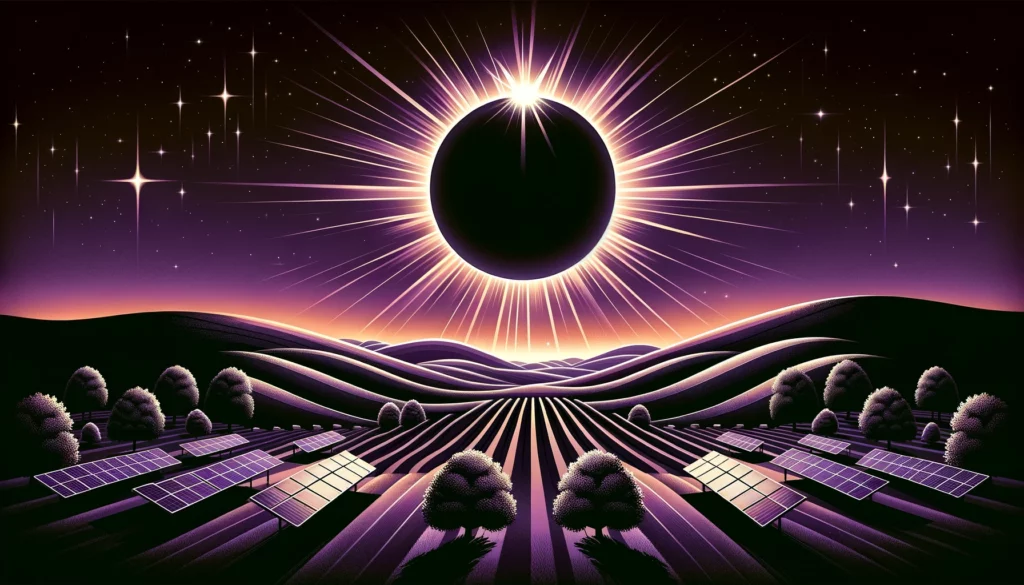
Get Ready for a Rare Celestial Event: The Solar Eclipse of April 8.
It’s been over a century since Arkansas has experienced anything like it: On April 8, the moon will pass between the earth and the sun, effectively blocking some or most of the sunlight that reaches the earth across a large swath of the United States.
Areas inside the “zone of totality” will experience total darkness, but areas near and far from that zone will still experience a partial loss of sunlight. Plus, although the duration of totality is only 4 minutes, the transition in and out of the eclipse could last several hours in some places. That means a much longer period of reduced solar generation.
With an energy system increasingly fueled by the power of sunlight, the sky going dark at midday is a big deal. “The impacts on solar generation are actually quite significant,” said Barry Mather, chief engineer at the National Renewable Energy Laboratory.
Fortunately, because solar eclipses are stunningly predictable, grid operators have had plenty of time to prepare for the impacts. Because of that, it’s unlikely most Americans will notice any changes to the electrical system.
Here’s what the 4-minute eclipse means for our electrical grid.
Does the Solar Eclipse Affect Solar Panels?
A solar eclipse, which causes a temporary loss of sunlight as the moon blocks its rays, matters a lot for the ever-growing supply of solar power deployed in the US.
“The grid will have to figure out, if that energy source goes away even for a few minutes, how to match supply and demand during that window,” said Benjamin Lee, a professor of electrical and systems engineering at the University of Pennsylvania.
It might seem like just a blip — the total loss of sunlight will last only for 4 minutes in any one place — but that overlooks the broader impacts of the eclipse.
The good news is that this is all predictable, and utilities have been here before, most recently in 2017. A report from NREL notes that “the 2017 total solar eclipse came and went without causing any issues to the operation of the North American electric power system.” There is considerably more utility-scale solar now than there was in 2017, but if all goes according to plan, electric consumers shouldn’t notice any kind of blip at all.
How to Watch the Solar Eclipse
If you want to get out there and gaze up at this celestial spectacle, here are some tips:
- Grab a reliable pair of solar viewers or filters and protect your eyes.
- Check out the map of totality to see the nearest viewing spot close to where you live.
- You can use an app or some other tricks to get the best photos.
- If you do get out into the zone of totality, don’t stare into the eclipse for too long, and make sure to wear the filters before and after totality to prevent eye damage.
